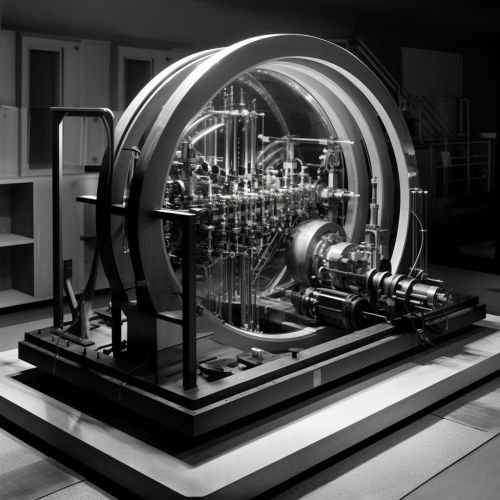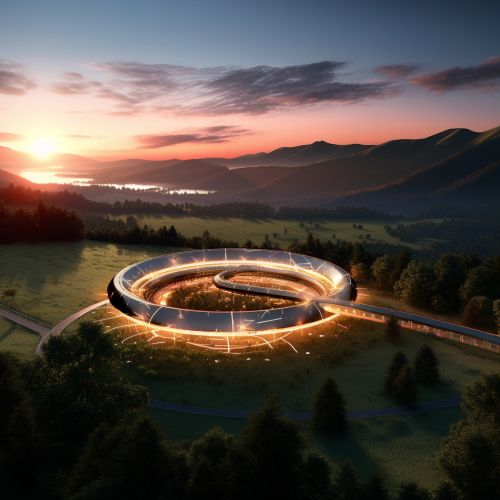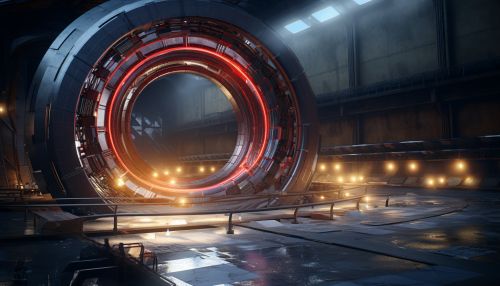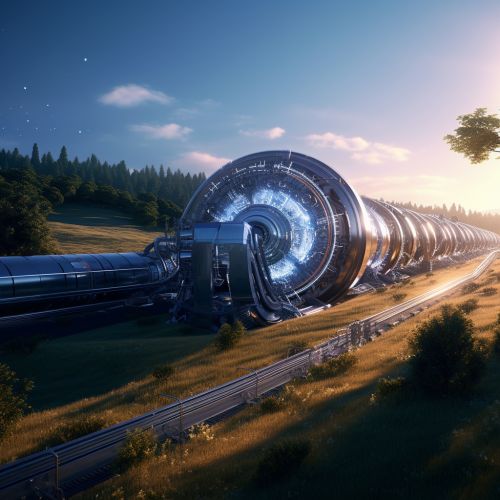The Physics of Particle Accelerators
Introduction
Particle accelerators are scientific instruments that use electromagnetic fields to propel charged particles to high speeds and to contain them in well-defined beams. The most powerful accelerators are used for research in particle physics, a branch of physics that studies the fundamental constituents of matter and the forces of nature.
History
The concept of particle acceleration dates back to the early 20th century. The first particle accelerator was the Cockcroft-Walton accelerator, developed in 1932. This was followed by the development of the Cyclotron in 1934 by Ernest Lawrence at the University of California, Berkeley. The development of these early accelerators marked the beginning of the age of particle physics.


Types of Particle Accelerators
There are several types of particle accelerators, each with its own specific design and purpose.
Linear Accelerators
Linear accelerators, or linacs, are the simplest type of particle accelerator. They consist of a linear sequence of radio frequency (RF) cavities that provide the accelerating field. The particles are injected at one end of the linac and are accelerated along the length of the machine.
Circular Accelerators
Circular accelerators, such as cyclotrons and synchrotrons, use a circular path to accelerate particles. The particles are injected into the center of the accelerator and are accelerated outward along a spiral path. The advantage of circular accelerators is that they can accelerate particles to much higher energies than linacs of the same length.
Collider Accelerators
Collider accelerators, such as the Large Hadron Collider (LHC), are a type of circular accelerator in which two beams of particles are accelerated in opposite directions and then collided. Collider accelerators are used for high-energy physics research.


Physics of Particle Accelerators
The physics of particle accelerators involves several key principles and concepts.
Charged Particles
Particle accelerators work by accelerating charged particles. The most commonly accelerated particles are protons and electrons, although other particles can also be accelerated.
Electromagnetic Fields
The acceleration of particles is achieved using electromagnetic fields. These fields are generated by RF cavities, which are devices that produce an oscillating electric field.
Relativistic Effects
As particles are accelerated to speeds close to the speed of light, relativistic effects become significant. These effects include time dilation and length contraction, which must be taken into account in the design and operation of high-energy accelerators.
Beam Dynamics
The study of beam dynamics involves understanding the behavior of the particle beam as it travels through the accelerator. This includes the effects of the accelerating field, the magnetic fields used to steer the beam, and the interactions between the particles in the beam.


Applications of Particle Accelerators
Particle accelerators have a wide range of applications, both in research and in practical applications.
Particle Physics Research
The primary use of particle accelerators is in research in particle physics. By accelerating particles to high energies and colliding them, scientists can probe the fundamental structure of matter and the forces of nature.
Medical Applications
Particle accelerators are also used in medicine, for example in the treatment of cancer. Particle therapy, such as proton therapy, uses particle accelerators to produce beams of particles that can be used to target and destroy cancer cells.
Industrial Applications
Particle accelerators have many industrial applications, including materials testing, radiation processing, and the production of radioisotopes for medical and industrial use.
Future of Particle Accelerators
The future of particle accelerators is likely to involve the development of new technologies and techniques to achieve higher energies and more precise control of particle beams. This could include the use of superconducting RF cavities, the development of new types of accelerators such as plasma accelerators, and the use of advanced beam diagnostics and control systems.


